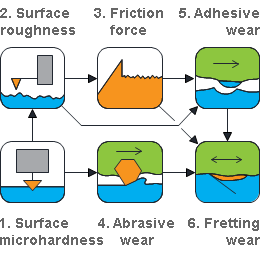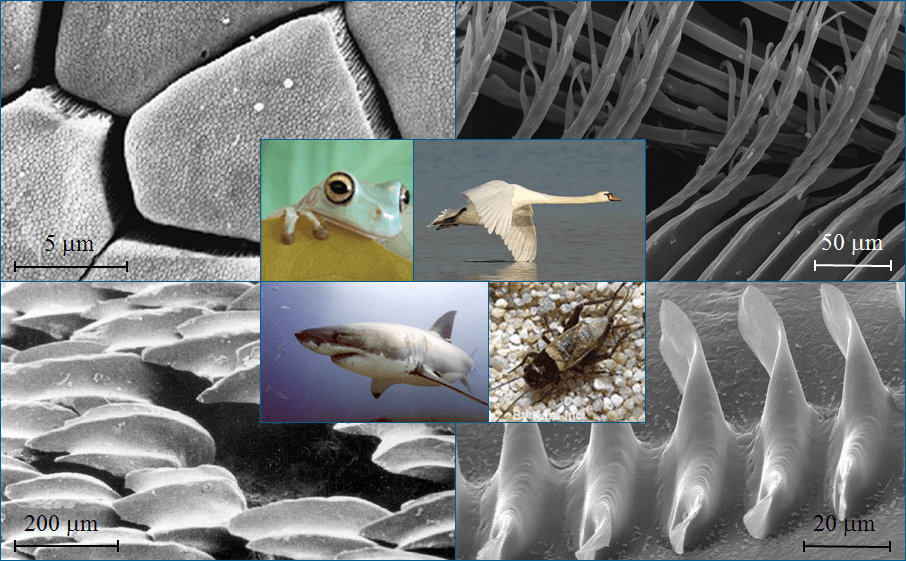ME 4853 Applied Tribology Lab
This course aims to introduce students to the fundamentals of the science and technology of interacting surfaces, and to provide them with hands-on experience in characterizing surface roughness and hardness, measuring friction in unidirectional and reciprocal sliding, and experimental modeling of adhesive, abrasive and fretting wear.
Topics covered:
1. Introduction: tribology in a machine’s life cycle and its economic impact.
2. Surfaces: roughness, residual stresses, surface energy.
3. Contact: types, real contact, contact mechanics, adhesion.
4. Friction: laws, types and components, energy dissipation, effects of different parameters.
5. Lubrication: types, functions, regimes.
6. Wear: oxidative, abrasive, adhesive, surface fatigue, fretting, erosion.
7. Methods: problem diagnostics, experimental means, reduction of friction and wear as a means of energy conservation and increase in mechanical components’ lifetime.
Workshops:

ME 8823 Tribology in Biology and Bionics
This course aims at introducing students to the studies of interacting surfaces in the world of animals and plants, while uncovering the biological side of adhesion, friction, lubrication and wear as a source of inspiration for engineering tribology.
Topics covered:
1. Introduction: natural selection as a basis of evolution, biodiversity as a source of knowledge for engineering.
2. Methods: testing biological systems, sample preparation and microscopy.
3. Biological surfaces: functions, properties and structure; lotus effect.
4. Attachment: biological functions, types and working principles; glues, probabilistic fasteners, gecko adhesion.
5. Relative motion: arrest, guidance and facilitation; tread effect, snake skin, shark skin.
6. Surface damage: traps, skin shedding, sandfish effect, human joint replacement.
7. Bionic engineering: systems thinking and model choice, abstraction and isolation of main functional components.


